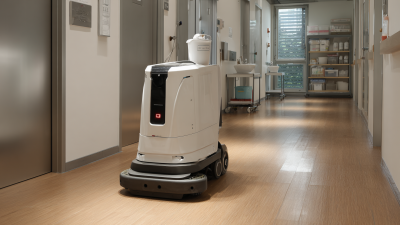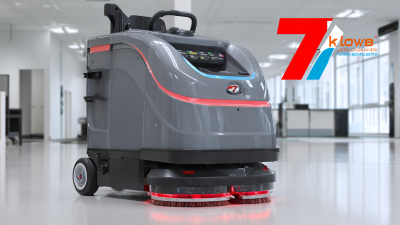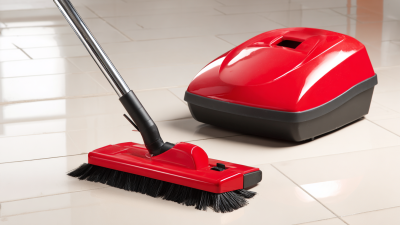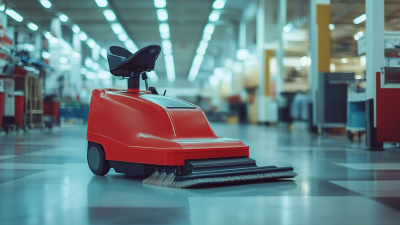Leave Your Message
As businesses increasingly prioritize cleanliness and efficiency, the demand for advanced cleaning solutions continues to rise. According to a report by the CleanFix Professional Cleaning Solutions, the global market for floor scrubber machines, particularly robots, is projected to reach $1.76 billion by 2026, growing at a CAGR of 11.5%.
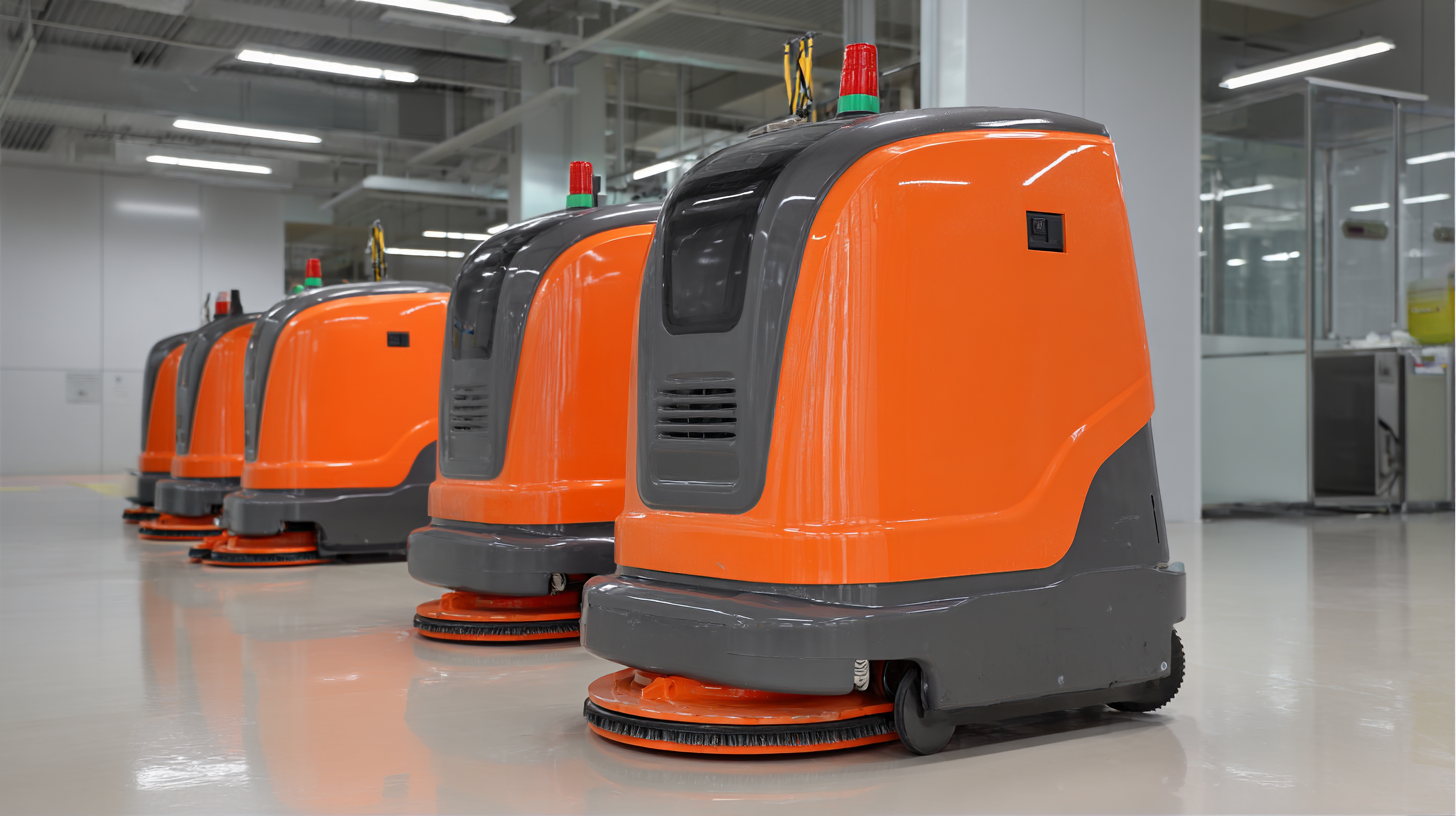
The integration of Floor Scrubber Machine Robots into commercial cleaning operations not only streamlines the cleaning process but also enhances productivity and consistency. These innovative machines are designed to navigate various environments, from large warehouses to busy retail spaces, thereby meeting diverse business needs.
With options ranging from autonomous navigation to customizable cleaning schedules, choosing the right Floor Scrubber Machine Robot is crucial for optimizing operational efficiency and maintaining high hygiene standards. This guide aims to assist businesses in selecting the most suitable model that aligns with their specific requirements and budget considerations.
When selecting the right floor scrubber machine robot for your business, it's crucial to identify key features that can enhance efficiency and productivity. According to a recent market analysis from IBISWorld, the commercial cleaning industry is expected to grow by 8.7% over the next five years, highlighting the increasing demand for effective cleaning solutions. Hence, choosing the right equipment becomes vital.
One of the most important features to consider is the robot's cleaning technology. Many models now use advanced sensors and AI algorithms that allow for efficient navigation and obstacle avoidance. In fact, a study by PMMI reports that robotic scrubbers can reduce labor costs by up to 50%, making them a smart investment for businesses aiming to optimize operational efficiency. Additionally, checking the battery life and charging time is essential. Most floor scrubber robots should ideally provide at least 2 to 3 hours of uninterrupted cleaning.
**Tips:** Always assess the footprint of the machine to ensure it suits your workspace. Look for models that come with customizable cleaning modes to tackle different surfaces. Also, consider those that feature easy-to-replace parts, which can significantly reduce downtime and maintenance costs.
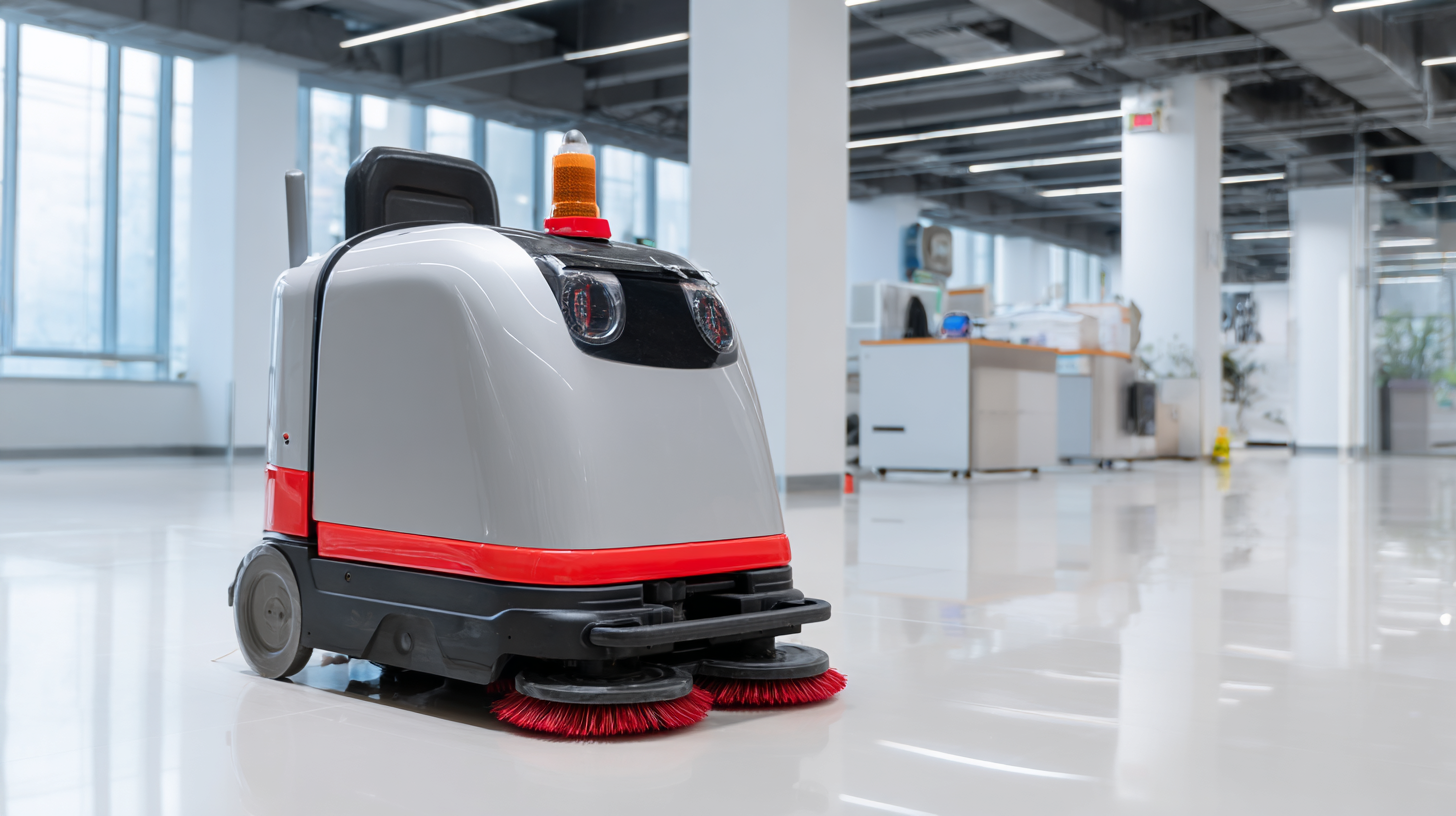
When assessing your business’s cleaning needs and space requirements, it’s essential to understand the specific demands of your environment. The European and Middle Eastern cleaning services market has seen significant growth, with floor care, window cleaning, and commercial vacuuming gaining traction. Identifying the type of cleaning tasks your business undertakes is crucial; for example, a hospitality venue may prioritize carpet and indoor cleaning, while a manufacturing facility might focus on maintaining equipment and floor surfaces.
**Tips:** Evaluate the size and layout of your space to determine the appropriate size and capability of a floor scrubber machine robot. A compact model may suffice for confined areas, while expansive spaces might require a larger unit with longer battery life and enhanced efficiency features. Additionally, consider the frequency of cleaning needed and the types of surfaces you will be maintaining.
Understanding your target end-users can also guide your decision-making. In sectors like horeca, where cleanliness is paramount, investing in advanced cleaning technologies can enhance operational efficiency and customer satisfaction. Assess your budget relative to the technology and service levels required to keep your facility spotless, as well as the potential return on investment in terms of labor savings and improved hygiene.
| Feature | Description | Ideal Use Case | Price Range |
|---|---|---|---|
| Battery Life | Duration of operation on a single charge | Medium to large facilities needing long cleaning cycles | $1,000 - $2,500 |
| Tank Capacity | Size of the water tank for cleaning solution | Large area cleaning with fewer refills | $800 - $2,000 |
| Weight | Total weight of the machine | Lightweight for quick maneuvering; heavier for stability | $500 - $1,800 |
| Cleaning Width | Width of the scrubber's cleaning path | Narrow for tight spaces; wide for large open areas | $600 - $2,200 |
| Smart Features | GPS navigation, autonomous cleaning, remote control options | High-tech environments needing efficient management | $1,500 - $3,500 |
When evaluating different types of floor scrubber robots available, businesses must consider several key factors that align with their cleaning requirements. According to a recent report by Allied Market Research, the global floor scrubber market is projected to reach $1.3 billion by 2026, indicating a growing trend towards automation in commercial cleaning. This surge underlines the importance of selecting a machine tailored to specific operational needs, such as floor type, space size, and cleaning frequency.
There are primarily three types of floor scrubber robots: robotic autonomous scrubbers, autonomous guided vehicles (AGVs), and walk-behind scrubbers. Robotic autonomous scrubbers like those from iRobot utilize advanced sensors and mapping technology to adapt to various environments efficiently. In contrast, AGVs excel in larger spaces, integrating seamlessly into existing workflows and enhancing productivity. According to a study by MarketsandMarkets, the adoption of autonomous floor scrubbers can improve cleaning efficiency by up to 30% compared to traditional methods. Understanding these variations will help businesses make informed decisions that can ultimately lead to reduced labor costs and improved cleanliness.
When selecting the right floor scrubber machine robot for your business, understanding the maintenance and support required for the chosen machine is crucial. A well-maintained floor scrubber will not only extend its lifespan but also enhance its performance, ensuring that your cleaning needs are met efficiently. Regular maintenance can help identify potential issues before they escalate, much like how static code analysis tools help developers spot vulnerabilities in software code.
Tips for maintenance include scheduling routine check-ups and following the manufacturer’s guidelines for cleaning and servicing the robot. Ensure that all moving parts are lubricated and that any filters or batteries are replaced as needed. Establishing a support plan with the supplier can also provide added peace of mind, allowing you to address any unforeseen breakdowns quickly without disrupting your operations.
Moreover, it’s important to stay informed about the support lifecycle of your chosen machine, just as users must adapt to platform updates and support terminations in software. For instance, being aware of how long support will last can influence your investment decisions and operational planning, ensuring you're always equipped with reliable cleaning technology.
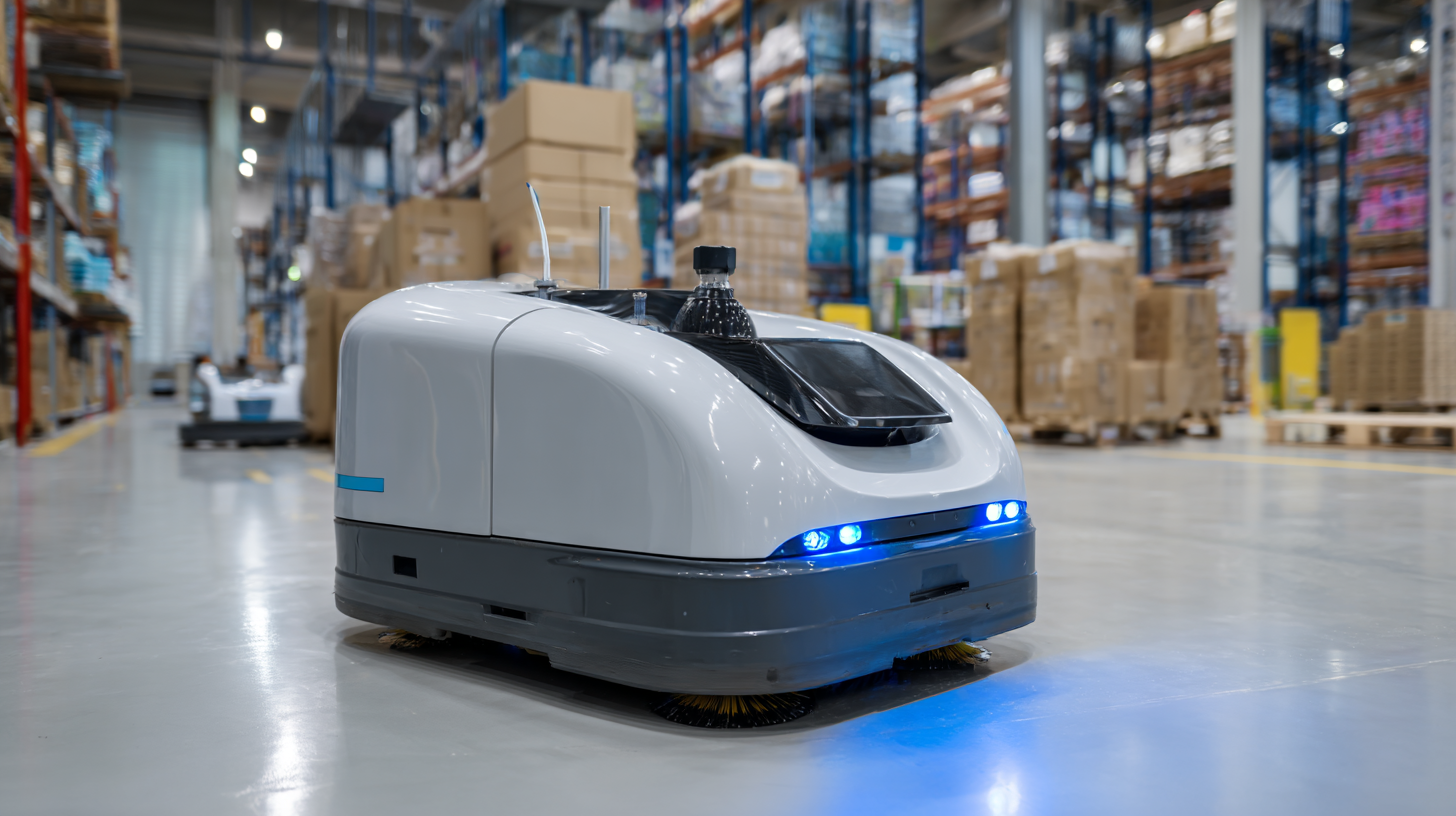
When considering the integration of floor scrubber robots into your business, a key aspect is understanding the costs involved and the potential return on investment (ROI). According to a report by MarketsandMarkets, the global market for robotic floor scrubbers is estimated to reach $3.26 billion by 2025, growing at a CAGR of 15.4%. This growth reflects not only the increasing adoption of automation in cleaning but also the long-term cost savings these robots can provide. For example, businesses can save up to 30% on labor costs by employing floor scrubber robots, as they can operate continuously without breaks and require minimal human oversight.
Moreover, the ROI for floor scrubber robots is particularly compelling in high-traffic environments. A study by the Cleaning Industry Research Institute indicates that organizations using robotic cleaning solutions can achieve an ROI of approximately 120% within the first year of investment. These machines enhance cleaning efficiency and consistency, reducing the frequency of manual cleaning and lowering overall operational costs.
Additionally, the advanced technology in floor scrubber robots enables the collection of data analytics on cleaning performance, which can further optimize cleaning schedules and resource allocation, leading to sustained financial benefits over time.
